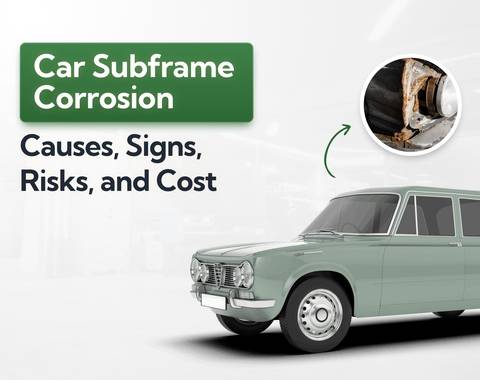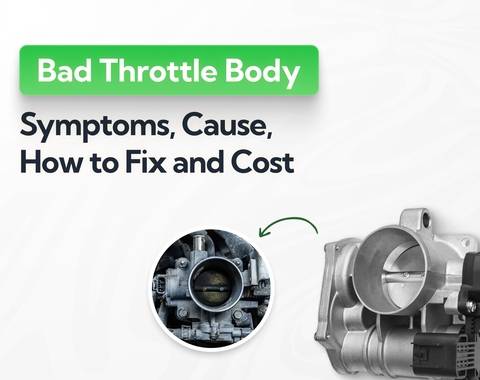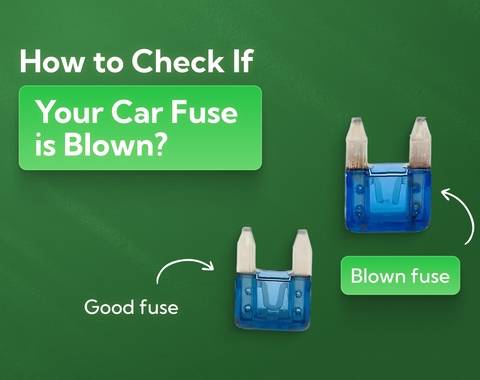Car Tax Bands, Prices & Information
From 1 April 2025, car tax bands and rates in the UK have changed significantly, and this affects almost every type of car on the road. Rates now depend on when your car was registered, its emissions and in some cases, its price. This guide breaks down the new bands, rates, and what they mean for you.
Last updated: 23rd October, 2025

Anthony Sharkey is COO at New Reg Limited (Car.co.uk, Trader.co.uk, Garage.co.uk), driving innovation in vehicle recycling, logistics, and customer experience.

Listen to this story
The rules for car tax — officially Vehicle Excise Duty (VED) — have been overhauled from 1 April 2025. These changes affect how much you pay depending on when your car was first registered, its emissions and in some cases its list price.
Under the new system, most older differential rates are replaced by a standard rate of £195 per year for most cars (petrol, diesel, hybrids) registered after 1 April 2017.
EVs (zero-emission vehicles) will no longer be exempt. New EVs face a first-year rate of £10, then move to the standard rate, plus an ‘expensive car supplement’ if the list price is over £40,000.
In this guide, I've detailed the new tax bands and rates. I'll explain how different types of vehicles are affected and give you examples so you know what to expect for your car in 2025 and beyond.
What's in this article
- 1. How does car tax work?
- 2. Car tax explained
- 3. Car tax rates in detail
- 4. How do I pay my car tax & how do you tax a car?
- 4.1 Paying your car tax online
- 4.2 Other ways to tax your car
- 4.3 Why is a car’s registration date important when it comes to tax?
- 4.4 Cars first registered before 1 March 2001
- 4.5 Cars first registered after 1 March 2001 and 31 March 2017
- 4.6 Cars first registered after 1 April 2017
- 4.7 Additional payments for cars worth £40,000 or more
- 5. Further changes to car tax rates in 2020
- 6. Which vehicles are subject to a road tax exemption?
- 7. Can I check my road tax?
- 8. How do you tax a car?
- 9. How do I tell the DVLA my car is off the road?
- 10. How can I cancel my car tax?
- 11. How is car tax enforced?
- 12. Can car tax be transferred to another owner?
- 13. Car tax scams
How does car tax work?
It’s a question we’re asked a lot here at Car.co.uk – and there’s no quick answer.
Car tax, often referred to as road tax, can be a complicated area; two vehicles that might seem very similar can actually end up paying significantly different amounts – and there are different amounts to pay based on when your car was first registered.
Since vehicle tax is quite complex, we’ve put together a detailed guide that explains everything you need to know if you want to tax a vehicle, including:
- How much is my car tax going to be?
- How do I tax my car?
- How can I cancel car tax?
- Are there different ways I can pay road tax?
We’ve included the links you’ll need if you just want to quickly tax a car. We’ve also included information and tables that explain all the different road tax bands; so you’ve got everything you need if you’re thinking about buying a car but want to check the road tax cost before you commit.
Car tax explained
The official name for ‘car tax’ or ‘road tax’ is ‘Vehicle Excise Duty’ (VED). Most vehicles on the road need to pay it – and you could face on-the-spot fines or prosecution if your car is being used without it.
In the past, a tax disc was used to prove you’d paid and could legally use your car on the road. Back then, you had to pay for tax in blocks of 6 or 12 months – but in 2014, tax discs were phased out, and the VED system became digital.
Today, tax can be paid with a monthly direct debit – and you don’t have to commit to a block of 6 or 12 payments. Instead, you can choose to just have an on-going payment. You’ll be expected to pay this monthly cost until you sell the car or decide to take it off the road and make a Statutory Off-Road Notification (SORN).
The amount you’ll pay will depend on a few different factors. Those factors can include when your car was first registered, the amount of CO2 exhaust emissions it creates, the fuel it runs on, and the value of the car.
Don’t worry – it might sound confusing, but the next section goes into lots of detail; so you’ll be able to work out exactly what you’re expected to pay, and why.
Car tax rates in detail
If you want to understand car tax completely, it’s useful to take a look at how changes to car tax rates have been adapted over the last few years.
In April 2017, the government went back to the drawing board with VED and redesigned the system with modern vehicles and environmental factors in mind.
In the past, engine size was the primary consideration when tax was calculated – but these changes meant that engine size no longer mattered – instead, CO2 emissions, the fuel type, and the age of the car became more important.
Now, some confusion can arise because of how changing rules to tax are applied. Generally, when the government brings in a new rule on car tax, the rule applies to new cars that are registered after they make a change. Since new rules don’t tend to apply to older vehicles, you need to know when your car was registered and the specific rules that apply to vehicles of its age.
How do I pay my car tax & how do you tax a car?
When your car tax is due you will be sent a V11 reminder that you can then use to pay your car tax. This is an annual payment that can be made online or alternatively, you can pay by cash or card at your local post office that offers this service. Another option is to make payment over the phone direct with the DVLA.
If you know your car tax is due and don't have your V11 then don't worry! You can use your V5C. If you have recently applied for a V5C then you can use your V62 application and if this is a car that you have just purchased then you are entitled to use your new keeper slip that you should of received when completing the purchase. In 2016, the DVLA has also introduced direct debit payments. This now allows motorists to pay monthly, semi-annually (every 6 months) or annually.
The direct debit will automatically renew your car tax each year but will automatically cancel if you SORN, sell your vehicle, scrap your car or export your vehicle out of the UK. Obviously though, this requires that the correct procedures are followed under each circumstance. If you fail to make a payment by direct debit then the DVLA will try again in 4 business day and if this fails, the direct debit will be cancelled. It is important to stay on top of this as a failed payment could get you into trouble as your vehicle would then be untaxed and also likely to be uninsured as a result.
Paying by direct debit does come at a cost if choosing to pay monthly or semi-annually. Currently that cost is an extra 5% premium to the motorist. Therefore, if you can afford to pay it annually it does provide an additional benefit to you.
Paying your car tax online
Taxing your car is a fairly straightforward process using the .GOV online service. You can even use the online car tax check from our website to get an instant price and VED status.
Before you get started, you’ll need:
- A DVLA tax reminder letter (V11) – or ‘last chance’ warning letter
- Your vehicle’s log book (V5C) in your name
- The green ‘new keeper’ slip from the previous log book if you’ve just bought the car
You’ll also need a means of paying – either debit or credit card details, or bank account details to set up a Direct Debit.
The online process is quick and straightforward – and when you’re complete, your car will be immediately taxed. It’s worth noting that you cannot cover part-months when you tax a car – so VED will start from the beginning of the current month.
Remember – even if your car is exempt, you must go through the ‘taxing’ process – although you won’t be expected to pay.
Other ways to tax your car
You don’t have to use the DVLA’s online service if you want to tax your car. You can also tax it at a Post Office or over the phone:
Taxing your car at the Post Office
If you want to tax your car at the Post Office, you’ll need to make payment that covers the period you’re taxing for by cash or card – or bank details that will let you set up a Direct Debit to pay for your tax monthly or semi-annually. You won’t need the means to pay if your car is exempt.
You’ll also need to take one of the following:
- Your vehicle log book (V5C) in your name
- The green ‘new keeper’ slip from the log book if you’ve just bought the car
If you don’t have a log book – you’ll need to apply for a new one before you can tax your car.
Unless you’re in Northern Ireland, you don’t need an insurance certificate to tax your car – but some Post Offices will ask to see your MOT certificate; so take it with you just in case.
Taxing your car over the phone
It’s also possible to call the DVLA’s automated vehicle tax service if you’d prefer to tax your car over the phone.
It is not possible to pay by Direct Debit over the phone though – so you’ll need to have your credit or debit card with you if you choose this option.
To tax your car on the phone, you need to get in touch with the DVLA Vehicle Service on 0300 123 4321.
Why is a car’s registration date important when it comes to tax?
When the government makes changes to tax rates for cars, it’s vital to remember that these changes are not backdated. Therefore, the tax rules for a car that is registered in 1999 would be different to a similar car that’s registered in 2019.
So, if you’re wondering how much your car tax will be – the first piece of information you need is the vehicle’s registration date.
Your car’s registration date doesn’t change – it’s the date that it was first registered with the DVLA for use on the road, not when it was registered to you as the keeper. We’ve put together a handy guide that gives you a few different ways work out exactly when your car was registered.
There’s no quick way to check car tax prices by registration number – but with your registration date to hand, we can take a look at the different tax rates depending on the age of your vehicle.
Cars first registered before 1 March 2001
If you’ve got an older car that’s registered before March 2001, VED is simply based on the size of the engine:
Cars first registered after 1 March 2001 and 31 March 2017
For vehicles that are registered on or after 1 March 2001 and 31 March 2017, VED is based around fuel types and CO2 emissions.
Every petrol and diesel car of this age fits into one of 13 different tax bands depending on its CO2 emissions. The bands are lettered from A to M. Higher the CO2 emissions are, the more tax you’ll have to pay.
CO2 emissions tax bands:
If you’ve got a vehicle registered during this time that uses an alternative fuel type (classed by the government as a TC59 vehicle) then slightly different prices apply:
After this period, it was decided that the way tax is paid would change slightly – but if you’ve got a car that was registered between 1 March 2001 and 31 March 2017, you’ll pay the same amount of tax every year, and it’ll only go up or down in line with government budget changes.
Cars first registered after 1 April 2017
For vehicles that were registered after 1 April 2017, the government decided that only the first year of VED would be based on CO2 emissions, then there would be a standard annual rate of tax from the second year onwards. This way of taxing new cars is often referred to as a ‘showroom tax’.
It was also decided that car owners have to pay a slightly higher rate for diesels that do not meet the Real Driving Emissions 2 (RDE2) standards – a series of new, strict emissions testing processes. Although passing these tests doesn’t become mandatory for diesel vehicles until 2021, the tax incentive is seen as a way of encouraging drivers into cleaner cars.
To begin with, there is a first payment to be made when you register the vehicle in your name:
This payment covers VED for the car for 12 months. After these 12 months, there is a standard rate of tax going forward, depending on the fuel type:
Now, this annual amount is subject to change based on decisions the government makes when there’s a budget – but it generally stays close to this amount and has only gone up by £10 in the last couple of years.
Additional payments for cars worth £40,000 or more
If you’re lucky enough to own a car that’s got a list price of £40,000 or more, you’ll find that your car is subject to an additional tax for the 5 years that follow the initial emissions-based payment.
At the moment, this means there’s an additional £325 to pay if your car falls into this price category.
For example; if you have a new Porsche 911 with a list price of around £90,000 and CO2 emissions of around 205g/km, then you’ll pay £1,305 for the first year’s VED, followed by £475 for the following 5 years (£150 basic VED rate + £325 owing to the car’s value). Beyond this, the annual VED cost will drop back to £150 per annum.
There’s good news for drivers of fully electric high-spec cars though – as since April 2020, this £40,000 rule doesn’t apply to zero-emissions vehicles. As such, even a £90,000 Tesla Model S will not be subject to VED – since it produces no CO2. It therefore ducks under any car tax requirements – either in year 1 or subsequent years. This is a change to previous rules though – as the premium used to apply to zero-emission cars worth £40,000 or more – but they are now exempt.
Further changes to car tax rates in 2020
As well as changes to EV tax, April 2020 saw a ‘behind-the-scenes’ type adjustment made in the car industry that could mean owners of virtually identical cars are paying different amounts of tax.
It wasn’t any kind of price increase though – it was a change to how CO2 measurements are made.
NEDC vs WLTP testing – changes for 2020
Until April 2020, CO2 emissions were calculated using the New European Driving Cycle (NEDC) test. The NEDC test is a single 20-minute cycle carried out on a vehicle over 11km (6.8 miles) at an average speed of 24kph (15mph). Although this has been the standard since the 1980s, the test is both short and slow, and it doesn’t consider any additional features or optional equipment that might be installed and running on the car.
The motor industry decided that this type of test did not accurately represent true driving conditions – so it was replaced with the Worldwide Light Vehicle
Harmonised Testing Procedure (WLPT).
The WLTP cycle is ‘dynamic’ – meaning the car’s speed goes up and down during the process; more accurately mimicking true driving behaviour. The test is longer too – with 4 different phases taking 30 minutes, average 47kph (29mph). Importantly, the WLTP test considers additional features that the car has – many of which alter economy and emissions.
The WLPT implications for car tax
The change in testing might be considered slightly bad news if you’re hoping to keep tax costs down – as many cars have been reclassified to accurately represent the more realistic figures the WLTP test produces. As a result, some cars have been moved up into higher emissions bands.
Although these changes might mean some vehicle tax goes up by a few pounds, the WLTP test is being used by manufacturers to improve the accuracy of their MPG figures too – so you’re also likely to get more realistic fuel economy figures to help you decide which car is right for you.
Which vehicles are subject to a road tax exemption?
Some vehicles are exempt from vehicle tax – but that doesn’t mean that you can just forget about VED.
It might not seem like it makes much of difference – but rather than just forgetting about vehicle tax and ignoring it, keepers of exempt vehicles effectively get their tax for free. Since vehicle tax is monitored by automatic enforcement cameras – registering your car as being exempt from tax means your car will show as being exempt when passes a camera – instead of simply being untaxed.
How you apply for a vehicle tax exemption depends on the type of vehicle you have and why it’s exempt – so let’s take a look at the kind of vehicles that you don’t need to pay tax for:
Electric vehicles
Since fully electric vehicles produce no CO2, they are exempt from paying road tax.
However, if you’re an electric vehicle driver, you need to be certain that your car is included. The .GOV website states that “The electricity your vehicle uses must come from an external source or an electric storage battery that is not connected to any source of power when the is moving to be exempt.”
Essentially, this means that only pure battery electric vehicles (BEVs) are exempt – and hybrids are not.
If your EV is exempt from paying for VED, you will need to apply as usual using the online service – but no payment will be taken.
Historic vehicles
In the past, cars became tax-exempt after 25 years – but now the rules have changed, so instead, any vehicle that’s made before 1 January 1980 is exempt from paying road tax.
If you’re applying for vehicle tax exemption for a classic car for the first time, you’ll need to go to a Post Office that deals with vehicle tax.
When you visit, you should make sure you have:
- The V5C log book in your name
- The V11 vehicle tax reminder if you’ve been sent one
- An MOT certificate that’s valid when the tax starts – or evidence that your car is exempt from needing an MOT (usually a V112 form)
The Post Office will send your log book to the DVLA – and they will send a confirmation to you within 10 working days, confirming that changes have been made. You’ll then get your new log book (and any refund that’s due) within 4 weeks.
Don’t worry if this sounds like a lot of hard work – you only need to go through this process when your car becomes eligible for an exemption. You’ll get a reminder letter when it’s time to renew your historic vehicle’s VED – and you’ll be able to complete the renewal process online.
Vehicles used by a disabled person
If your vehicle is being used by a disabled person, you may be able to apply for a ‘disability exemption’ from car tax.
You can apply for VED exemption if you received certain payments, allowances, or supplements. They are:
- Higher rate mobility component of Disability Living Allowance (DLA)
- Enhanced rate mobility component of Personal Independence Payment (PIP)
- War Pensioners’ Mobility Supplement
- Armed Forces Independence Payment
According to guidance on the .GOV website, the vehicle must be registered in the disabled person’s name – or in the name of their nominated driver. The vehicle must only be used for the disabled person’s personal needs too – it cannot be used by a nominated driver for their own personal use.
If eligible, you can claim the exemption when you apply for your vehicle tax. Although, a little like historic car exemptions; if you’re applying for the first time, you have to do so at a Post Office.
Other exempt vehicles
Although the vast majority of VED exempt vehicles are either electric cars, historic vehicles or cars used by disabled people; there are a few other types of vehicle that can apply for a tax exemption, including:
- Certain mobility scooters and powered wheelchairs
- Disabled passenger vehicles
- Mowing machines
- Steam vehicles
- Certain vehicles used for agriculture
You can check the full list of exempt vehicles on the .GOV website and find full details of how to apply for exemptions for these vehicles.
Can I check my road tax?
Now you know the ins and outs of how car tax is calculated, you might decide you want to check your vehicle’s tax status online.
The good news is, it couldn’t be easier.
To check car or motorcycle tax, you can simply use of free MOT history check tool. You’ll need to input the registration of the car you’re checking – and when you do, you’ll get to see whether or not the vehicle is taxed – and when the VED is next due.
How do you tax a car?
Taxing your car is a fairly straightforward process – and the easiest way to do it is using the .GOV online service.
Before you get started, you’ll need:
- A DVLA tax reminder letter (V11) – or ‘last chance’ warning letter
- Your vehicle’s log book (V5C) in your name
- The green ‘new keeper’ slip from the previous log book if you’ve just bought the car
You’ll also need a means of paying – either debit or credit card details, or bank account details to set up a Direct Debit.
The online process is quick and straightforward – and when you’re complete, your car will be immediately taxed. It’s worth noting that you cannot cover part-months when you tax a car – so VED will start from the beginning of the current month.
Remember – even if your car is exempt, you must go through the ‘taxing’ process – although you won’t be expected to pay.
Other ways to tax your car
You don’t have to use the DVLA’s online service if you want to tax your car. You can also tax it at a Post Office or over the phone:
Taxing your car at the Post Office
If you want to tax your car at the Post Office, you’ll need to take payment that covers the period you’re taxing for – or bank details that will let you set up a Direct Debit to pay for your tax monthly. You won’t need the means to pay if your car is exempt.
You’ll also need to take one of the following:
- Your vehicle log book (V5C) in your name
- The green ‘new keeper’ slip from the log book if you’ve just bought the car
If you don’t have a log book – you’ll need to apply for a new one before you can tax your car.
Unless you’re in Northern Ireland, you don’t need an insurance certificate to tax your car – but some Post Offices will ask to see your MOT certificate; so take it with you just in case.
Taxing your car over the phone
It’s also possible to call the DVLA’s automated vehicle tax service if you’d prefer to tax your car over the phone.
It is not possible to pay by Direct Debit over the phone though – so you’ll need to have your credit or debit card with you if you choose this option.
To tax your car on the phone, you need to get in touch with the DVLA Vehicle Service on 0300 123 4321.
How do I tell the DVLA my car is off the road?
Car tax is only required if you’re going to be using or storing your vehicle on a public road. If you plan to take your car off the road (storing it on private land or in a garage for instance), then you can make a Statutory Off-Road Notification (SORN) to let the DVLA know it doesn’t currently require tax.
If you want to SORN your vehicle, there are 3 ways to do so:
Online
If you’re going to SORN a vehicle online, you can choose to begin the SORN immediately, or from the first day of the following month.
If you want to start your SORN immediately, you’ll need to use the 11-digit number from the car’s log book (V5C). However, if you want to start your SORN from the first day of next month, you’ll need to use the 16-digit number you get on the vehicle tax reminder letter (V11).
You can only SORN your vehicle online if it’s registered in your name. If it’s not, you’ll have to tell the DVLA that it’s off the road by post.
By post
The postal SORN process takes a little longer – as you’ll need to fill out and send an application form (V890) to the DVLA.
When you complete your application, it will ask you when you want to take your car off the road. It can be any day either:
- This month or last month (but you won’t get a refund for past dates)
- Next month or the month after (you’ll need to include a letter explaining why you cannot send the form nearer the time)
When complete, you should send your application to:
DVLA
Swansea
SA99 1AR
By phone
If you’d prefer, you can call the DVLA to register your car as SORN.
To do so, you need to get in touch with the DVLA Vehicle Service on 0300 123 4321.
It’s a 24-hour automated service – and you can find out details of call charges here.
Problems getting a SORN?
It’s not uncommon for people to run into problems when they’re looking to SORN their vehicle. You might have trouble if your address is wrong on your log book, if the vehicle’s not registered in your name, or if you simply don’t have a log book.
If you run into these problems – or any others – there’s a dedicated .GOV page you can visit that covers steps you will need to take.
How can I cancel my car tax?
When your car becomes exempt from paying tax or you SORN your car, your tax is automatically cancelled and any full months that remain are refunded – but these aren’t the only reasons you might want to cancel your tax.
The DVLA will also cancel your vehicle tax if your vehicle has been:
- Sold or transferred to someone else
- Written off by your insurer
- Scrapped at an authorised vehicle scrapyard
- Stolen
- Exported out of the UK
When you use Car.co.uk to scrap your car, our scrap partners will let you know the next steps you need to take – but not everyone offers this level of customer service, so it’s absolutely vital that you let the DVLA know if any of the above are relevant. To make it as quick and easy as possible, we’ve included links to official .GOV pages you’ll need to use in the list.
What happens when you’ve told the DVLA?
Once you’ve hit the link you need and completed the online process, your vehicle tax will be cancelled. You don’t have to worry about cancelling your Direct Debit – it’ll happen automatically.
You’ll also automatically get a refund cheque for any full months of tax you had remaining. The DVLA will send the cheque to the name and address on the V5C log book.
What the experts say

William Fletcher MBE
What happens if you need a refund within the first tax payment period?
As we’ve already covered above – there are some instances where you’ll have paid a large upfront chunk of CO2-related tax when you bought your car. Despite this amount possibly being up to £2,175, you won’t get back a proportional amount for the remainder of the year. Instead, the amount you get back with be based on whichever is the lower of:
- The first tax payment when you bought the car
- The rate for the second tax payment onwards
Unfortunately, this generally means the largest refund you’re likely to get it the rate you would pay for the second year onwards.
How is car tax enforced?
In the days of tax discs, it was fairly easy to spot a car owner that had not paid their VED – but today, there’s no way of glancing at a car and working out whether it’s taxed or not.
Of course, the police and car tax enforcement firms don’t have this problem though – as they usually have automatic cameras that read your number plate, check the national tax database, then automatically issue fines for untaxed cars.
Avoiding or forgetting to tax your car isn’t just breaking the law, it’s bad news for your pocket too – as you could be fined up to £1,000. What’s more, the DVLA employ enforcement contractors to enforce against non-compliant vehicles – and they will clamp or impound your car if they find it on the road without tax.
It can cost you up to £200 to have your vehicle released from a clamp or vehicle pound – and there’s also a ‘surety’ fee of £160 to be paid that you’ll only get back when you prove that you’ve taxed the car.
In short – failing to tax your car is likely to result in hefty fines and large costs – and it can be something as simple as passing a police camera that can catch you out.
Can car tax be transferred to another owner?
Back when you needed a tax disc to prove you’d paid your VED, simply selling that paper disc with the car was enough to transfer the tax – but today, this just isn’t possible.
As soon as a car is sold, you’ll need to alert the DVLA – and the new keeper will need to tax the car using the ‘new keeper’ green slip that they get from the V5C log book document.
The good news is, both letting the DVLA know the car is sold and taxing the car as a new owner are both done instantly – so there’s no reason you can’t do it quickly after buying/selling the car.
Car tax scams
Unfortunately, as vehicle tax became digital, the number of scams relating to car tax increased dramatically.
In fact, the DVLA has revealed that they’ve seen a recent 20% increase in suspected vehicle tax scams throughout 2019 – with 1,538 reports issued between October and December that related to bogus texts, emails, or social media scams.
Often, cybercriminals target people suggesting they are owed a refund of car tax. Since the vehicle tax system is quite complex, it’s not uncommon for people to find themselves duped because they don’t know whether or not the information is correct.
Staying safe when you’re dealing with car tax
Last year, the government issued a number of tips that would help motorists stay safe online. They pointed out that they never send SMS text messages or emails to ask motorists for personal information or payment details – and they never offer refunds in this way either.
They also warned people to look out for misleading websites and premium numbers – as both could be an indication that you’re dealing with a company who’s trying to take advantage of any misunderstandings around VED.
Ultimately, the very best way to stay safe when you’re dealing with car tax is to make sure you only handle your vehicle tax on .GOV.uk web pages – and if you come across anything you’re not 100% confident is official, report it to the police via Action Fraud immediately.
Fraud or cybercrime can be reported to Action Fraud by calling 0300 123 2040 (Monday to Friday, 8am to 8pm), or by using their online reporting tool, which is available 24/7.
Use Car.co.uk to find information that’ll help with car tax
As you can see, car tax can be complex and can change frequently – but with the right tools, working out how much you need to pay is fairly simple.
If you want to check when your vehicle was registered, you can do so using our free MOT checking service. You’ll also be able to find your emissions band on your V5C document – and with these 2 pieces of info, you’ll be able to budget for on-going tax costs for your car.
About Car.co.uk

Share on
Latest news & blogs










